Gardening In a New Climate: Putting Your Own Personal Stamp on Your Garden
For those of you who have found yourselves in a new place without a clue how to care for your garden, this post is for you.
In my last post, we talked about six things to do before you make any changes to your landscape.
Today, it’s time for the fun part – putting your personal stamp on your garden.
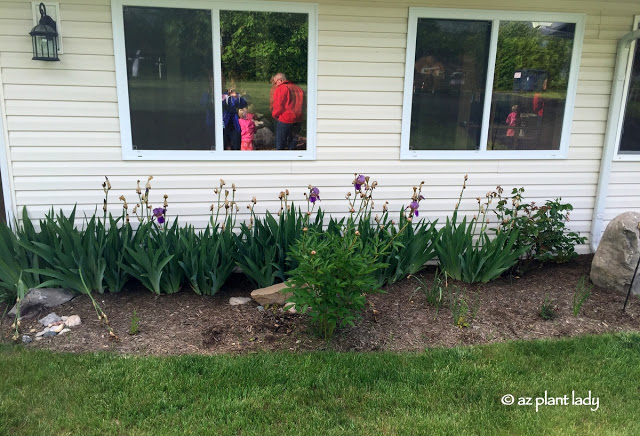
How to Gardening In a New Climate, The front of the house had a continuous row of bearded iris, several peony bushes, and a rose.
To illustrate the steps, I will be using my daughter and her new home in Michigan as an example.
1. Remove any unwanted plants.
For many people, this is the hardest step to take. Quite a few have a problem with killing plants.
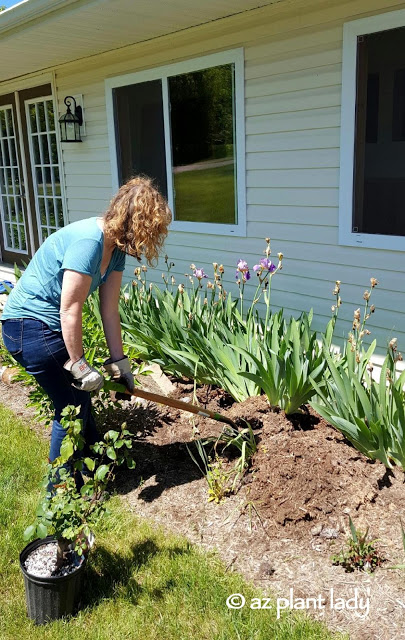
How to Gardening In a New Climate, My daughter didn’t particularly like bearded iris. So I dug up most of them.
Let me help you with this big step:
– The outside of your home should reflect you and your tastes, as the interior does.
– We eat plants (vegetables) every day without thinking twice about it.
– In many cases, you are replacing old plants with new ones that you like much better.

How to Gardening In a New Climate, It was a lot of work, but we got it done.
– You can try to give your unwanted plants away to friends, neighbors, or your landscaper may have a use for them.
2. Figure where you want to add new plants and how many you need.
Just because you have removed some plants, doesn’t mean that you need to replace all of them. Empty space can be used to draw attention to the plants present and create a more streamlined design.
Measure the area where you want new plants to be added so that you don’t inadvertently purchase plants that are too large or small.
3. Decide what types of new plants you want and how many you will need.

If you’ve followed the guidelines that I outlined in Part 1, you will have a good idea of what plants you will want to add along with their requirements.
My daughter and her husband wanted roses, an apple tree, and lavender.
It goes without saying that you should select plants for a certain area, based on what exposure they require. West and south-facing exposures are considered full sun. North-facing is shady. Eastern exposures can be tricky as they have both full sun and shade during parts of the day. In those cases, choose plants that can take the sun and filtered shade for best results.
4. Take your list and shop for new plants.

After canvassing several local nurseries, we finally found the Mr. Lincoln rose we had been looking for.
As I mentioned in my previous post, it is a good idea to form a relationship with your local nursery, who can be a wealth of helpful information.

Take time to ask questions about specific plants that you are buying – nursery staff will often provide information on how to care for it along with other characteristics.
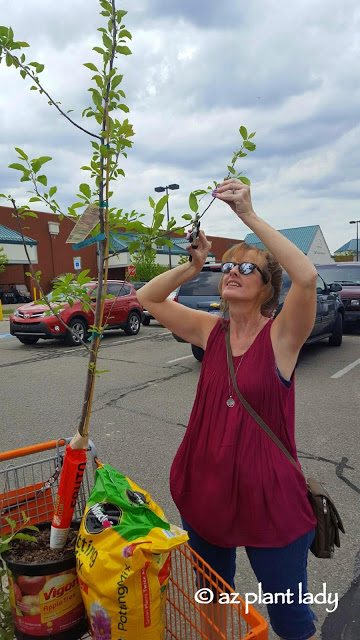
Sometimes, you just have to do a little impromptu pruning in the parking lot to get your new apple tree to fit into the car.
Although big box stores aren’t the best source for plant advice or whose plant stock is reliable hardy for that specific climate – they can be a good source for plants if you know what you are buying ahead of time and can’t find it anywhere else.
5. Dig holes 3X as wide as the root ball.
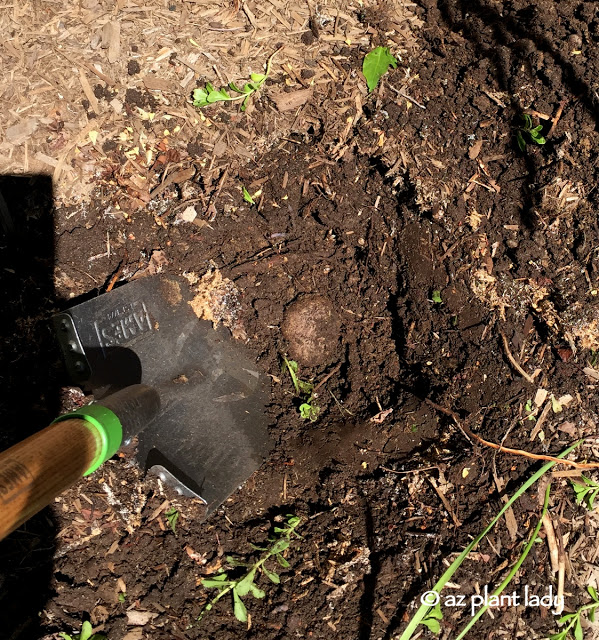
How to Gardening In a New Climate, The soil in this part of Michigan has a LOT of rocks in it.
The majority of a plant’s roots spread outward into the top 18 inches of soil. By digging the hole wider than the rootball, you are helping it to become established more quickly.

How to Gardening In a New Climate, Get your kids involved – they will have fun while learning about nature at the same time. (A recycled cardboard box makes a great temporary knee rest or place to sit).
**It’s important to note that the depth of the hole should be slightly shallower (a couple of inches) than the rootball. Settling can occur after planting, and if plants are too deep, they can suffocate from a lack of oxygen.
6. Install new plants
This is perhaps the most rewarding part of adding your personal style to the garden.
All you’ve done to this point comes to a head as you place the first plant that you chose yourself in your garden.
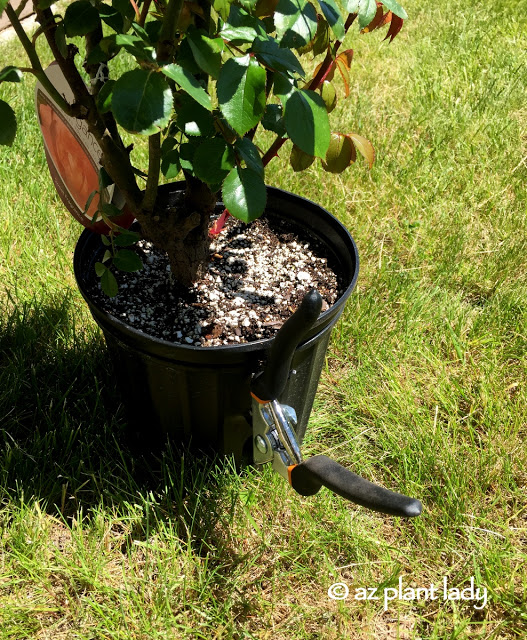
There are a few tricks to transplanting new plants successfully. One of the hardest can be to remove the plant safely from its nursery container without damaging the roots.
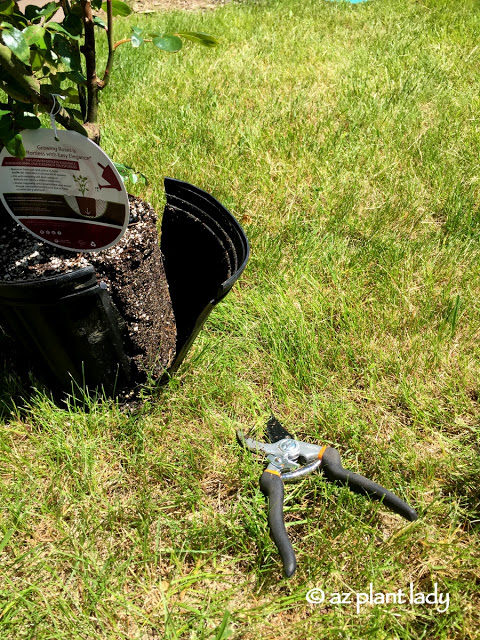
For 5-gallon to 15-gallon size plants, a sharp pair of hand pruners, or loppers are invaluable. Use them to make two cuts from the top to the base, about 1/3 of the circumference of the pot apart.
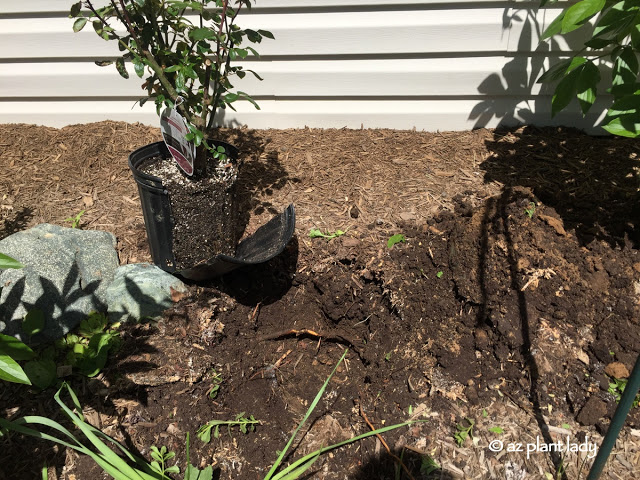
Carefully fold down the cut section of the nursery pot and gently slide the plant into its hole.
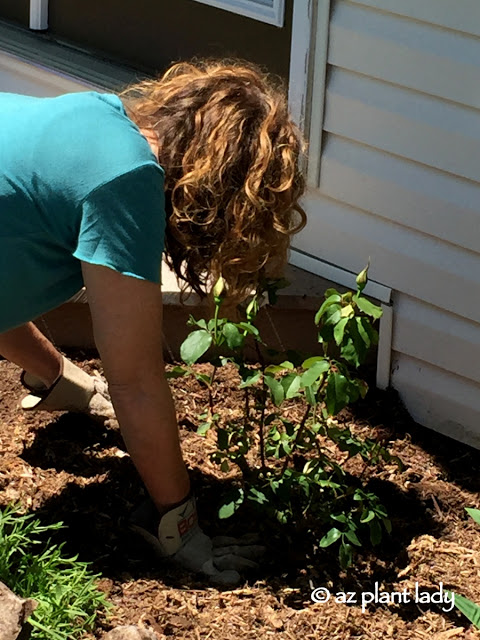
Press the soil firmly around the plant and water deeply.
7. Prune and maintain what you already have.
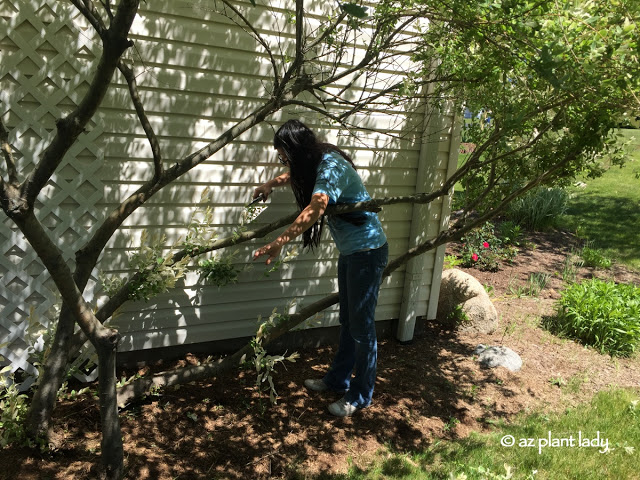
My third oldest daughter, pruning the lower branches of the dappled willow trees.
As we talked about in Part 1, learn about your current plants and what type of maintenance they require from the nursery and cooperative extension office. They should be able to tell when and how much to prune certain plants. Don’t know what type of plant you have? Take a picture with your phone and take it to the nursery, who should be able to identify it for you.

Weed-filled, future vegetable garden
Remove any and all weeds.
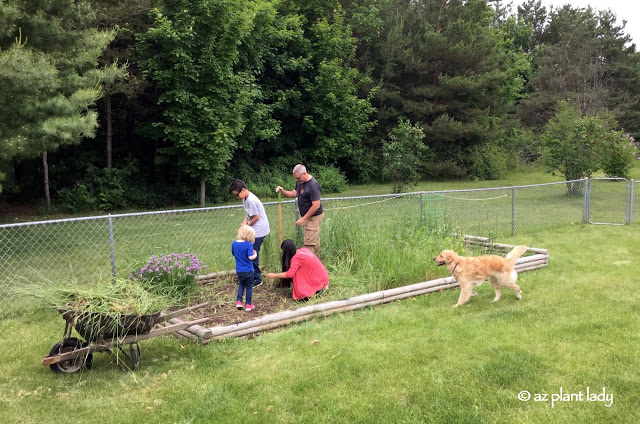
Don’t be afraid to have your family help you.
8. Whenever possible, get your kids involved in the garden.

If possible, give them their own small plot of land where they can grow anything they want. *This can be a place to add some plants that you ripped out of other areas of the garden.
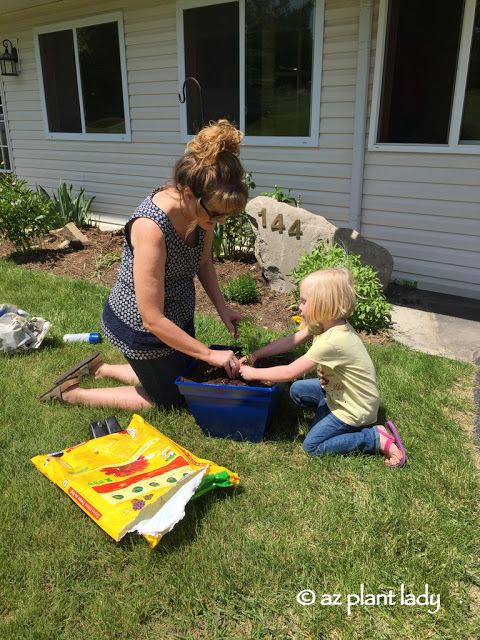
Provide them with kid-sized gardening tools such as gloves, hand shovel, and a watering can.
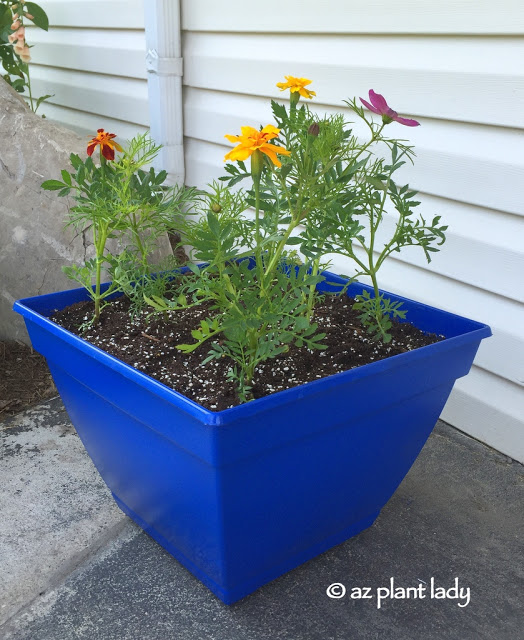
Let them pick out plants. This will give your child a sense of ownership of their new house and garden, which can help decrease any homesickness for their old home.

While weeding the vegetable garden, my youngest daughter, and granddaughter found a tiny frog.

Gardening encourages your child to spend time in an outdoor classroom where they can run and play while discovering new things.
No matter where you live, I hope that the following tips will help you create a garden the reflects your personality while adding beauty to your outdoor space.

 Noelle Johnson, aka, 'AZ Plant Lady' is a author, horticulturist, and landscape consultant who helps people learn how to create, grow, and maintain beautiful desert gardens that thrive in a hot, dry climate. She does this through her consulting services, her online class Desert Gardening 101, and her monthly membership club, Through the Garden Gate. As she likes to tell desert-dwellers, "Gardening in the desert isn't hard, but it is different."
Noelle Johnson, aka, 'AZ Plant Lady' is a author, horticulturist, and landscape consultant who helps people learn how to create, grow, and maintain beautiful desert gardens that thrive in a hot, dry climate. She does this through her consulting services, her online class Desert Gardening 101, and her monthly membership club, Through the Garden Gate. As she likes to tell desert-dwellers, "Gardening in the desert isn't hard, but it is different."
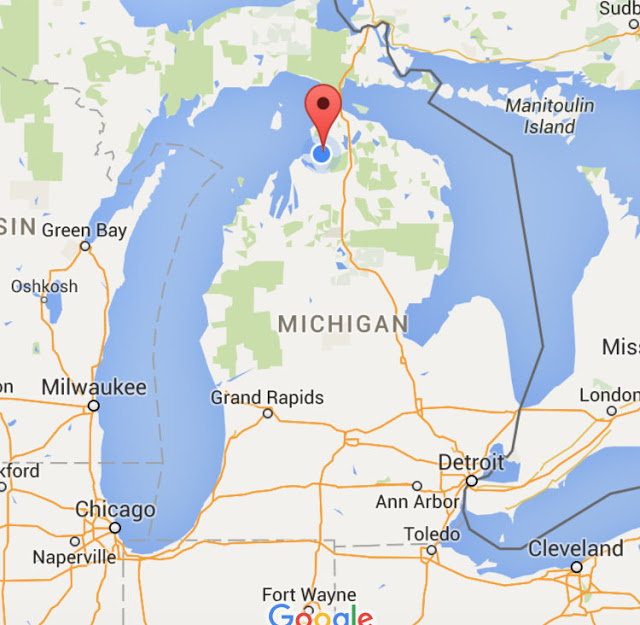

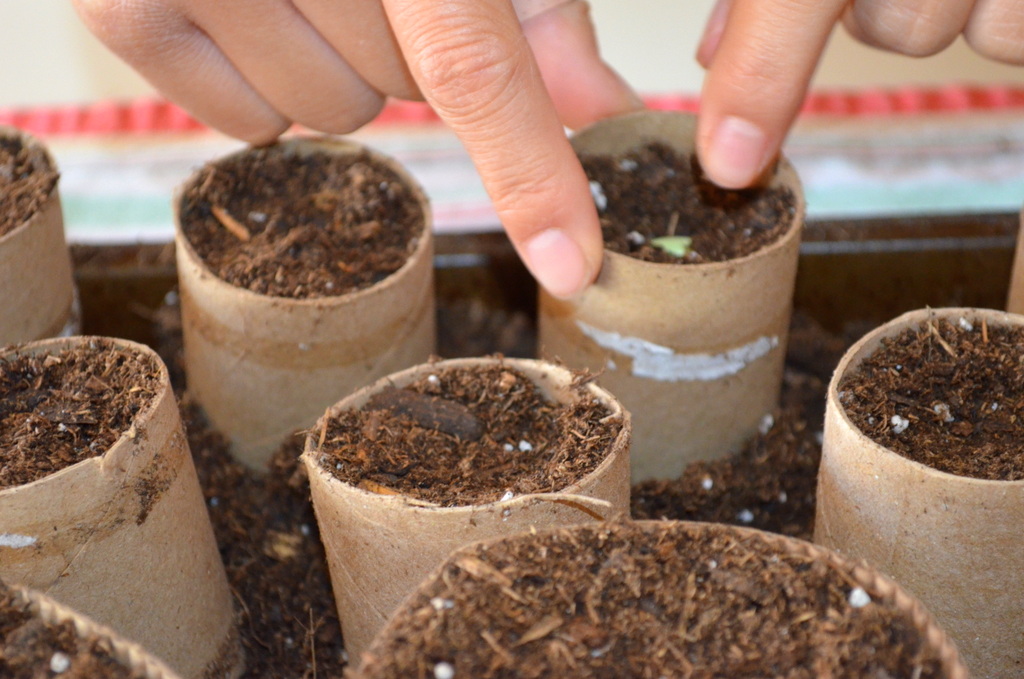
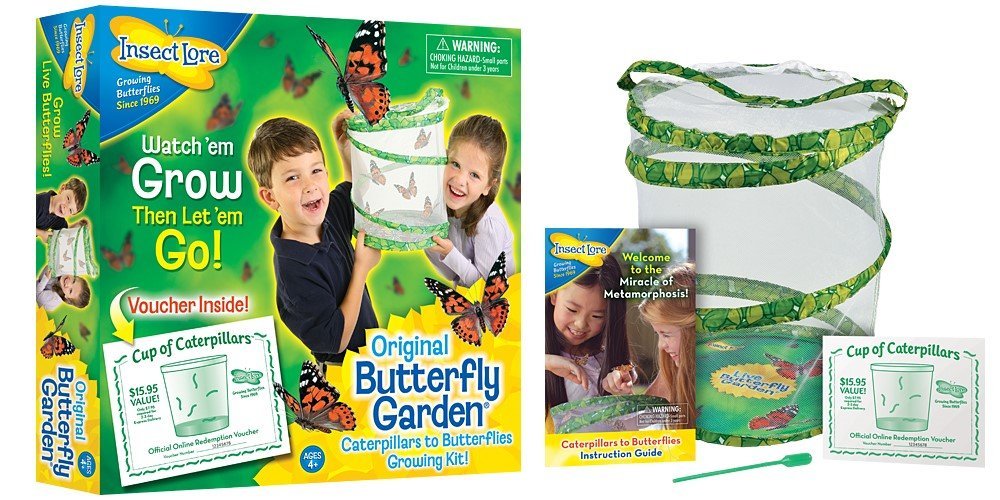
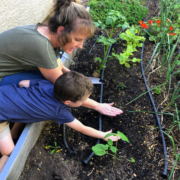







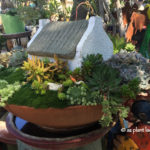
Since I have experience in planning and implementing a new home garden, I've enjoyed these posts simply to see the transformation of your daughter's new home! Hope you'll show a few more pictures, even if you do have to return to Arizona.